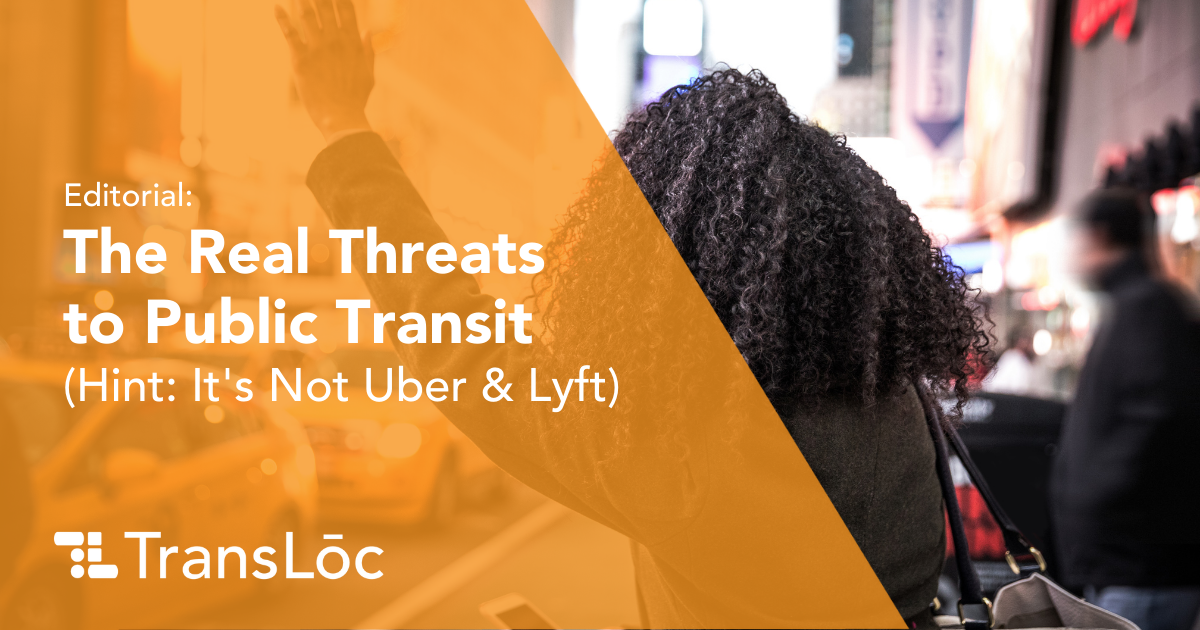
On a brisk morning last May, Sunny Madra, vice president of Ford’s accelerator program, left his Manhattan apartment to catch a plane to San Francisco. After unsuccessfully trying to hail a cab for 20 minutes, he booked an Uber to JFK International Airport for a whopping $248.90. Little did he know that his 18-mile ride to the airport would cost as much as his cross-country flight.
It turns out that Madra’s misfortune was not (and is still not) unique. A resurgent demand for Uber and Lyft rides, coupled with a shortage of drivers and new laws regulating driver pay, have caused fares to skyrocket.
Over the past few months, many outlets have covered the dramatic fare increases of ride-hailing services. These articles often highlight experiences similar to Madra’s while speculating over the long-term implications to the mobility landscape.
I posit that other factors — particularly the design and operations of fixed-route service, availability of on-demand service, and individual choice in light of the pandemic — will have a greater impact on the future of public transportation than ride-hailing fare fluctuations.
Here’s why.
Fixed-route service needs to be frequent, convenient, and reliable
Some articles claim that steep prices will cause Uber and Lyft users to shift to substantially-cheaper public transit options. This is certainly supported by the individuals they quote; however, most of the articles focus on the country’s top-tier transportation cities such as New York, San Francisco, and Chicago. But do their claims hold true in cities with under-funded transportation systems, where driving is often a more attractive option than taking the bus?
In the majority of American cities, traditional fixed-route public transit isn’t often viewed as a viable alternative to ride-hailing. While recent research in U.S. cities with the largest transit agencies found that travel is shifting from public transportation to ride-hailing, another study of 20 major U.S. metropolitan areas suggests that Uber and Lyft’s status as replacements or complements to transit is much more nuanced and depends on the location, type, and quality of public transportation options available.
In cities like Dallas-Fort Worth, Cincinnati, San Diego, and Las Vegas, will an ex-Uber user trade the ability to get to any place they want to go at the touch of their fingertips for a travel experience that often requires more foresight in trip planning? Will they transfer between routes? Will they wait for the bus in the heat of summer at a stop without a shelter? Many U.S. transit agencies have the desire to compete with the convenience, comfort, and independence offered by ride-hailing options. Unfortunately, most lack the proper infrastructure to keep up. Transit providers need the support to invest in fixed-route service that is frequent, convenient, and reliable with amenities that promote a comfortable user experience.
On-demand microtransit services are more important than ever
Making fixed-route service more frequent, convenient, and reliable could require simplifying routes and supplementing low-service areas with flexible on-demand microtransit. Done well (read: equitably, accessibly, and intentionally), on-demand can support the overall transit network by replacing under-performing routes or extending service coverage. We’ve published previously about the importance of this relationship and how the two services can complement one another. In terms of attracting riders — whether Uber and Lyft users or not — the flexibility, independence, and convenience of on-demand microtransit would certainly cater to many choice riders who prefer ride-hailing (or even their own car) over waiting at the bus stop.
COVID-19 isn’t over and some may be hesitant to share space with strangers
In many cities around the world, people are choosing to sit shoulder-to-shoulder on trains and buses again. For some, it was never an option. They were already used to (and committed to) taking public transit for a variety of reasons: financial, environmental, convenience, necessity, etc. But, what about those who were not frequent transit users pre-pandemic? How much harder will it be to attract choice riders who now also see public transit as a threat to their personal health, something that can increase their exposure to an unknown virus? Even for riders who were committed to transit pre-pandemic, how many are currently — or will be in the future — cautious about sharing space with others? The behavioral unknowns of those who have the privilege to question their transit use, regardless of whether they use ride-hailing or not, undoubtedly casts a shadow on the future of public transit at the hands of choice riders.
While agencies may be limited in their ability to combat a growing aversion to shared spaces, they can leverage technology to help riders make informed choices. For instance, real-time capacity tracking can let potential riders know how full a bus is in advance, so they can choose to ride when they perceive less risk. Similarly, clearly communicating expectations for how riders should behave, as well as agencies’ own commitments to public health, can lessen anxieties among potential riders.
In short, while Uber, Lyft, and other ride-hailing services have undoubtedly transformed the mobility landscape, let’s not overstate the impact the recent fare increases will likely have on our transit future. The long-term health of public transit depends on the availability and accessibility of options — both fixed-route and on-demand — to provide freedom of movement in an era where tolerance for inconvenience wanes ever more quickly. Perhaps a Utopian future — one where taking transit is second nature — is yet to come, but getting there begins with making public transportation the attractive choice.
Maybe then, even those who can afford to pay $300 won’t think twice about skipping Uber in favor of the bus or train.